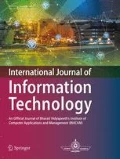Abstract
This paper addresses the ‘modeling’ aspect of the computing with words (CWW) paradigm. The objective is to offer the computations for fuzzy modeling of phrases consisting of linear adjectives and linguistic hedges. The study conducted is novel in view that the effect of linguistic hedges on the Type-2 representation of the linear adjectives is investigated, particularly the Linear General Type-2 (LGT2) representation reported lately in the literature. Thus, the paper contributes to outline the General Type-2 representation of the phrases such as very tall, more or less short, etc. Particularly, the study finds application in the assignment of membership functions to the linguistic labels in complex fuzzy logic system which serves to complex CWW problems. The implementation carried out for the conducted study reports results that are in agreement with the effect caused by the linguistic hedges.
Similar content being viewed by others
Code availability
The code implemented in Java language for the work carried out and the related data is available.
References
Aguiar H (2019) A topological perspective for interval type-2 fuzzy hedges (preprint)
Bilgin A, Hagras H, Malibari A, Alhaddad MJ, Alghazzawi D (2012) Towards a general type-2 fuzzy logic approach for computing with words using linear adjectives. In: 2012 IEEE international conference on fuzzy systems, pp 1–8. IEEE
Bilgin A, Hagras H, Malibari A, Alhaddad MJ, Alghazzawi D (2013) Towards a linear general type-2 fuzzy logic based approach for computing with words. Soft Comput 17(12):2203–2222
Civanlar MR, Trussell HJ (1986) Constructing membership functions using statistical data. Fuzzy Sets Syst 18(1):1–13
Herrera F, Herrera-Viedma E, Martınez L (2000) A fusion approach for managing multi-granularity linguistic term sets in decision making. Fuzzy Sets Syst 114(1):43–58
Herrera-Viedma E, López-Herrera AG (2007) A model of an information retrieval system with unbalanced fuzzy linguistic information. Int J Intell Syst 22(11):1197–1214
Herrera-Viedma E, López-Herrera AG, Luque M, Porcel C (2007) A fuzzy linguistic IRS model based on a 2-tuple fuzzy linguistic approach. Int J Uncertain Fuzziness Knowl Based Syst 15(02):225–250
Herrera-Viedma E, Peis E, Morales-del Castillo JM, Alonso S, Anaya K (2007) A fuzzy linguistic model to evaluate the quality of web sites that store XML documents. Int J Approx Reason 46(1):226–253
Jamsandekar SS, Mudholkar RR (2014) Fuzzy classification system by self generated membership function using clustering technique. BVICA M’s Int J Inf Technol 6(1):697
Kacprzyk J, Zadrozny S (2005) Linguistic database summaries and their protoforms: toward natural language based knowledge discovery tools. Inf Sci 173:281–304
Martinez L, Barranco MJ, Pérez LG, Espinilla M (2008) A knowledge based recommender system with multigranular linguistic information. Int J Comput Intell Syst 1(3):225–236
Medasani S, Kim J, Krishnapuram R (1998) An overview of membership function generation techniques for pattern recognition. Int J Approx Reason 19(3–4):391–417
Mendel JM (2003) Fuzzy sets for words: a new beginning. In: The 12th ieee international conference on fuzzy systems, 2003. FUZZ’03, vol 1, pp 37–42. IEEE
Mendel JM (2014) General type-2 fuzzy logic systems made simple: a tutorial. IEEE Trans Fuzzy Syst 22(5):1162–1182
Mendel JM (2016) A comparison of three approaches for estimating (synthesizing) an interval type-2 fuzzy set model of a linguistic term for computing with words. Granul Comput 1(1):59–69
Mendel JM (2017) Uncertain rule-based fuzzy systems. In: Introduction and new directions. Springer, p 684
Mendel JM (2019) Type-2 fuzzy sets as well as computing with words. IEEE Comput Intell Mag 14(1):82–95
Mendel JM, John RB (2002) Type-2 fuzzy sets made simple. IEEE Trans Fuzzy Syst 10(2):117–127
Niewiadomski A (2008) A type-2 fuzzy approach to linguistic summarization of data. IEEE Trans Fuzzy Syst 16(1):198–212
Siddique B, Beg MS (2019) “Computing with words” -based semantic similarity measure for adjective phrases. In: 2019 International conference on electrical, electronics and computer engineering (UPCON), pp 1–5. IEEE
Turksen I, Resconi G (2006) Fuzzy truthoods based on an additive semantic measure with break of global symmetry in modal logic. Int J Fuzzy Syst 8(1):14–38
Verkuilen J (2005) Assigning membership in a fuzzy set analysis. Sociol Methods Res 33(4):462–496
Wang TC, Chang TH (2007) Forecasting the probability of successful knowledge management by consistent fuzzy preference relations. Expert Syst Appl 32(3):801–813
Wu D, Mendel JM (2007) Aggregation using the linguistic weighted average and interval type-2 fuzzy sets. IEEE Trans Fuzzy Syst 15(6):1145–1161
Zadeh LA (1972) Fuzzy-set-theoretic interpretation of linguistic hedges. J Cybern 2(3):4–34
Zadeh LA (1999) From computing with numbers to computing with words. From manipulation of measurements to manipulation of perceptions. IEEE Trans Circuits Syst I Fundam Theory Appl 46(1):105–119
Zadeh LA (1999) Fuzzy logic= computing with words. In: Computing with words in information/intelligent systems 1, pp 3–23. Springer
Zadrozny S, Kacprzyk J (2006) Computing with words for text processing: an approach to the text categorization. Inf Sci 176(4):415–437
Zhu AX, Yang L, Li B, Qin C, Pei T, Liu B (2010) Construction of membership functions for predictive soil mapping under fuzzy logic. Geoderma 155(3–4):164–174
Funding
No funding was received.
Author information
Authors and Affiliations
Corresponding author
Ethics declarations
Conflict of interest
The authors declare that they have no conflict of interest
Rights and permissions
About this article
Cite this article
Siddique, B., Beg, M.M.S. Effect of linguistic hedges on General Type-2 fuzzy representation of linear adjectives. Int. j. inf. tecnol. 13, 1217–1220 (2021). https://doi.org/10.1007/s41870-021-00635-9
Received:
Accepted:
Published:
Issue Date:
DOI: https://doi.org/10.1007/s41870-021-00635-9




